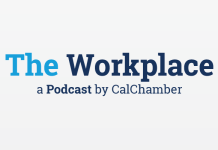 Across California, more than 35 municipal governments have established their own unique labor laws, creating a confusing patchwork of ordinances that employers must carefully monitor.
Across California, more than 35 municipal governments have established their own unique labor laws, creating a confusing patchwork of ordinances that employers must carefully monitor.
The rules are confusing, sometimes applying only to unincorporated areas within counties, and may differ even between cities nearby. For example, Cupertino and East Palo Alto are just 13 miles apart and yet each city has established a different minimum wage. To add to the confusion, some localities start their minimum wage increase at the beginning of the year, while others opt for July 1.
And these ordinances are not just limited to wage rules. Many local cities and counties have passed ordinances relating to paid sick leave, criminal background checks, employee scheduling and more.
The rise of remote work has created only more confusion for employers, as where a remote employee is working determines the local minimum wage rate and ordinance to which they may be subject. This means that employers must frequently stay on top of where their remote employees are working.
These ordinances also incur more costs for employers, as the laws have notice, posting and recordkeeping requirements.
Failure to comply with these obligations may subject employers to fines, penalties or even civil action in the courts or with the California Labor Commissioner under certain circumstances.
More Patchwork Laws Proposed
Two new proposals put forth this year seek to establish more patchwork rules.
In the city of Los Angeles, a council member has proposed increasing the minimum wage for airport and hotel workers in the city to $25 an hour, then raising it $1 each year until 2028, bringing it to $30 an hour.
In the California Legislature, AB 525 (Durazo; D-Los Angeles) would impose significant cost on health care facilities and any employer who works with health care facilities by mandating an increase in minimum wage to $25 an hour.
One of the many problematic aspects of the bill is its broad language. The bill would cover employers of all sizes outside of the health care sector, including those who may employ any worker who sets foot on the premises of a health care facility or who performs any “health care service” for a facility. These services are broadly defined to include janitorial staff, food service, laundry, and more that do not provide direct care for patients.
The California Chamber of Commerce has warned legislators that the astronomical increase in labor costs that will result from SB 525 is simply not sustainable and will raise costs at both private and public health care facilities by billions of dollars.
“The inevitable ripple effect of SB 525 would be a mix of increased cost of care and reduced jobs and services. California cannot afford to risk facility closures, staffing shortages, or rising costs, especially in areas where access to health care is already limited,” the CalChamber said in a letter.
Information on Local Ordinances
CalChamber members may reference HRCalifornia’s Local Ordinances section, which includes summaries of many local ordinances in Northern California and Southern California — including Alameda, Berkeley, Emeryville, Fremont, Los Angeles (city), Los Angeles County, Malibu, Milpitas, Oakland, Pasadena, San Diego, San Francisco, Santa Monica and West Hollywood.


